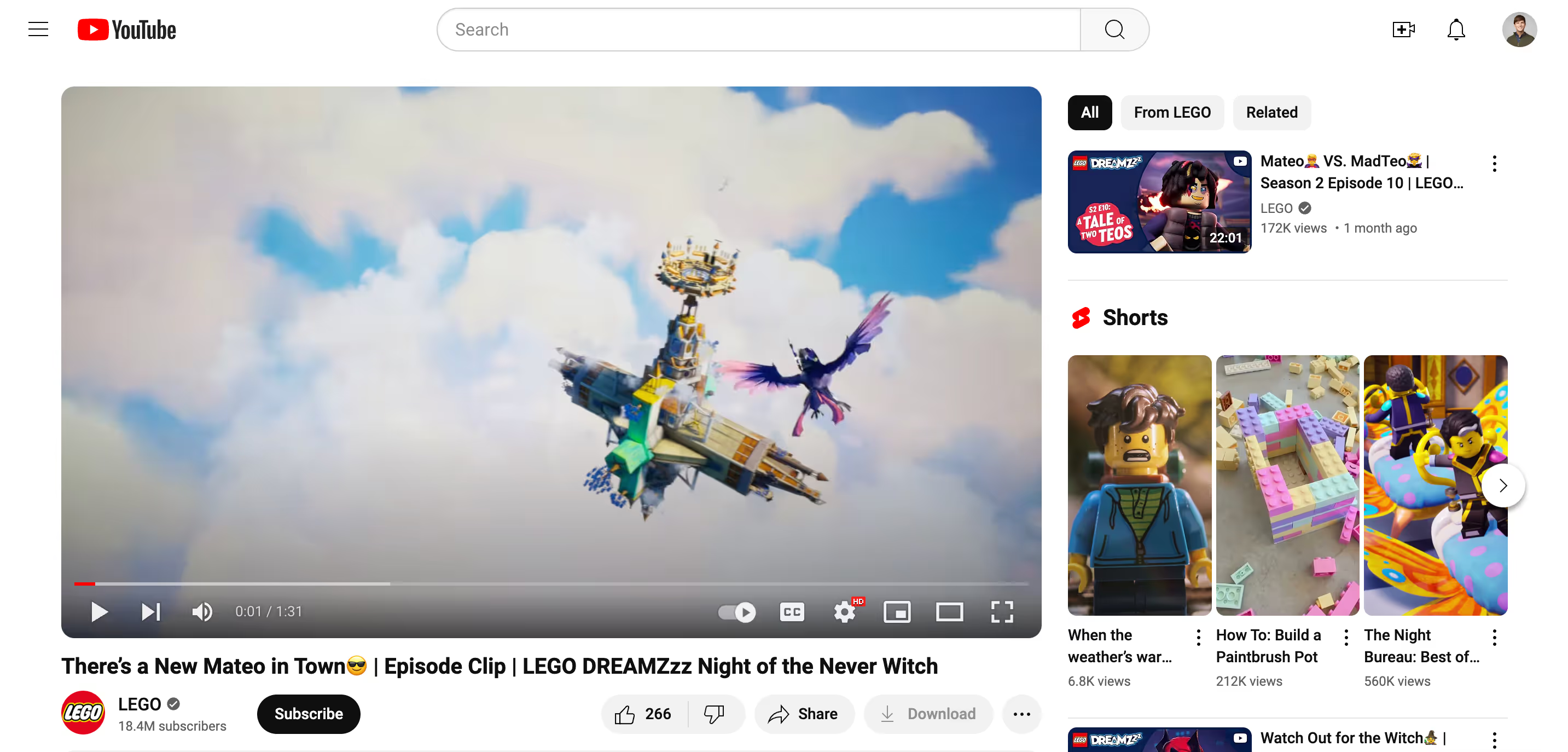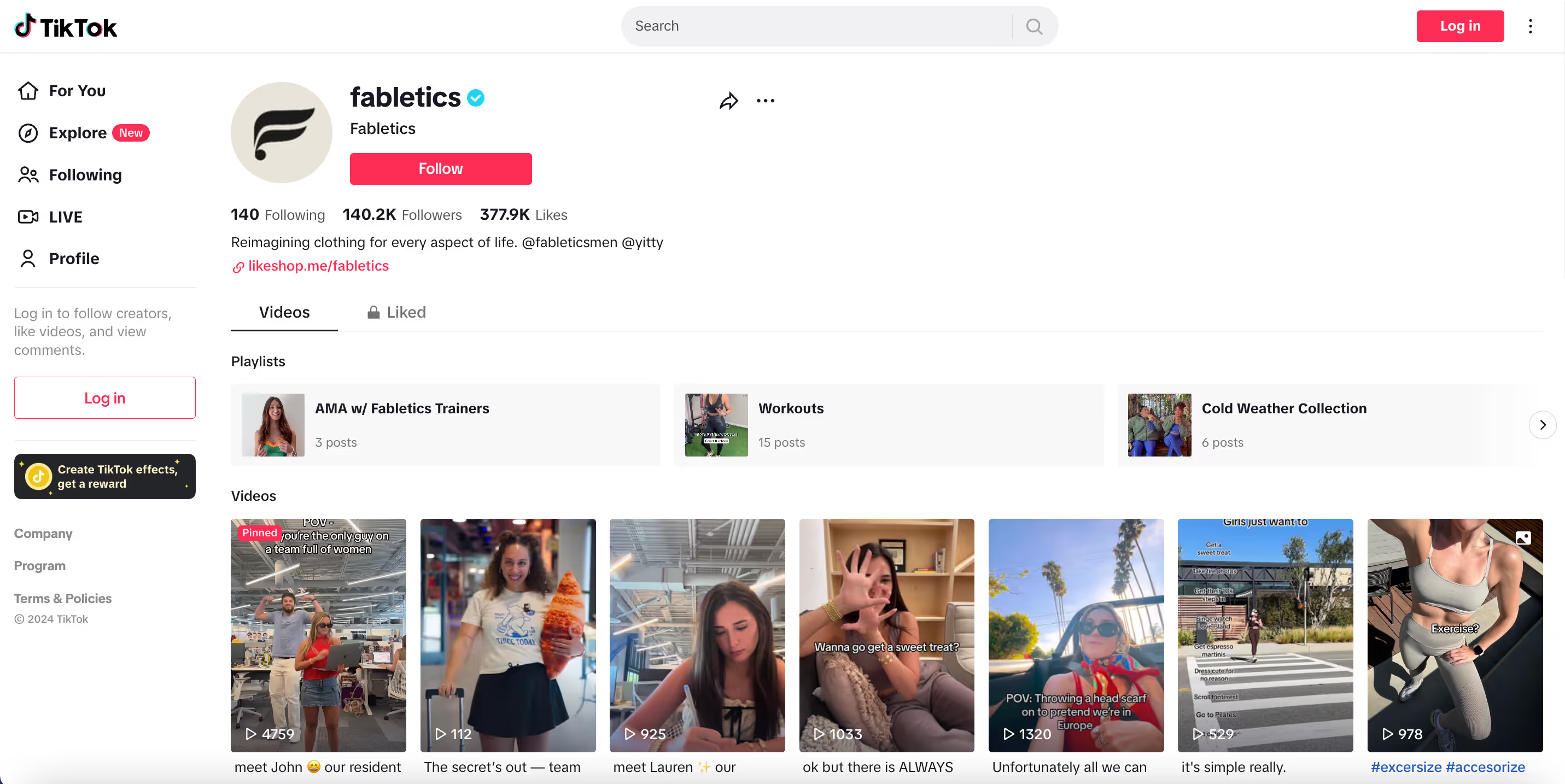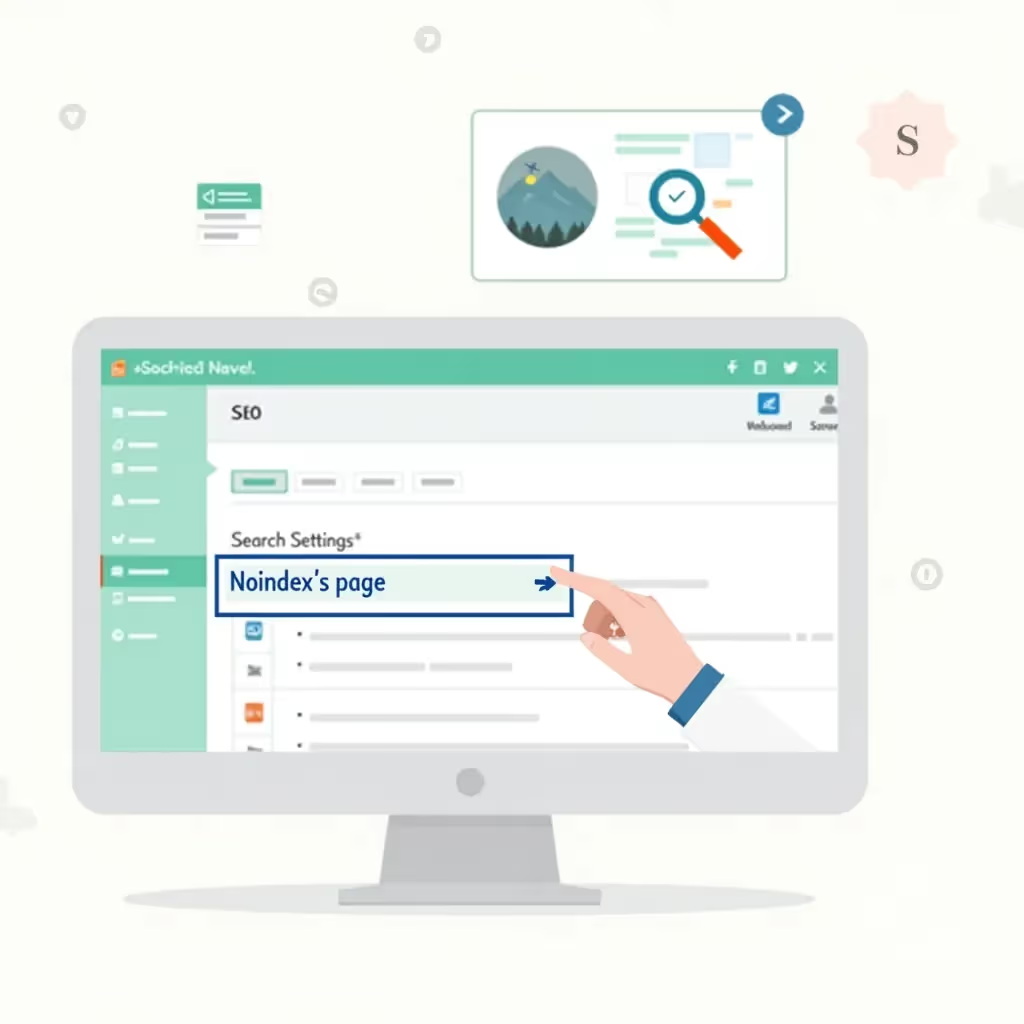Content marketing is about creating valuable, relevant content that your audience actually wants to see. It’s not just about shouting, “Buy our product!” from the rooftops. Rather, you should craft content that educates, entertains, or solves problems for your target market.
Think blog posts, videos, podcasts, newsletters — anything that provides real value to your audience. The goal is to build trust, establish your brand as an authority, and keep people coming back for more.
But here’s where some brands get confused. Content marketing is not the same thing as “having a blog.” It’s a much wider concept that encapsulates all your content channels. Content marketing is the strategy and the content itself (what you’re saying), while distribution channels are how you share your content with the world (where you’re saying it).
The key is to match your content to the right channels. There’s no point in creating long-form articles if your audience is all about quick TikTok videos, and vice versa.
Why Content Marketing Is So Powerful for B2C Brands
According to new research by the Content Marketing Institute, 70% of B2C marketers say that content marketing has become more important over the past year. This is largely because content marketing helps brands hit many goals at once:
- 81% say it increased brand awareness.
- 77% say it built trust and credibility.
- 71% say it educated their audience.
- 63% say it increased loyalty with existing customers.
- 63% say it generated demand and leads.
- 42% say it generated sales and revenue.
The beauty of content marketing is its versatility. Want to generate more leads? Increase traffic? Grow your brand name? Build a community? You can do all of these things and more with content marketing.
The Benefits of B2C Content Marketing:
- Improve audience communication. Content marketing helps you speak to customers and leads in a personal way.
- Acquire customers organically. Content marketing offers a way to reach prospects without relying on paid promotions or ads.
- Build brand awareness. Sharing content on platforms where your target audience is already hanging out increases your reach and gets more eyeballs on your products.
- Establish trust and credibility. Providing valuable information in the form of how-tos, tutorials, and educational content shows that you know your stuff.
- Improve your search rankings. Google loves fresh, relevant content. Sharing optimized blog posts and videos will help you rank well in search results.
- Increase engagement. Content gives people a reason to interact with your brand beyond just buying stuff.
- Support the buying journey. From awareness to consideration to decision, content can guide customers through the sales cycle.
- Boost customer retention. Sharing valuable content post-purchase helps retain existing customers.
- Differentiate your brand. High-quality, valuable content can set you apart from the competition in a crowded market.
- Showcase your brand personality. Content lets you show off your brand’s unique voice and values.
How to Choose the Right Content Marketing Channels
It’s tempting to spread yourself across every channel available. But keeping up with TikToks, blog posts, newsletters, podcasts, Instagram Reels, and video content is a major juggling act. Some brands do it well, but they usually have a large budget behind them.
Not every channel is right for you and your customers. You want to choose a mix that’ll really resonate with your audience.
Step One: Where Do Your Buyers Hang Out?
Firstly, identify the platforms your audience uses the most. For example, if you’re targeting Gen Zers who love travel, TikTok is a good choice (72% of Gen Z use TikTok, compared with 50% of the general population). Alternatively, if you want to reach millennials looking for home DIY tips, Facebook might be a better option.
You can survey your audience to see where they hang out online the most, or you can take a look at your competitors — which channels do they regularly promote content on? Do they have a blog and a newsletter, or do they prefer to show up on social media?
Step Two: Choose Your Channels
Audience research will show you which channels your audience prefers, but it’s also worth considering what type of content performs best on each channel and where those channels fit into your overall marketing strategy.
For example, if you sell luxury tours to Asia, there’s a good chance your customers go through a longer journey to purchase than customers shopping for budget sneakers. This means you might need more content touchpoints to build trust and credibility.
Here are some channels to consider:
- Social media: Best for creating personal connections, growing your reach, and communicating with customers.some text
- Instagram: Great for visual brands in fashion, food, and travel.
- TikTok: Perfect for short, snappy content that shows your brand personality.
- Facebook: Still solid for reaching a broad audience, especially older demographics.
- Blog: Best for attracting organic traffic to your website and educating readers. This is the perfect platform for SEO-friendly articles, how-to guides, and deeper dives into your products or industry.
- Email marketing: Best for nurturing existing customers and building loyalty. This is where you can share exclusive content and personalized recommendations.
- YouTube: Best for educating your audience and sharing tutorials, product demos, and behind-the-scenes peeks at your brand.
- Podcasts: Ideal for storytelling, interviews, and building a loyal community.
Step Three: Create Your Content Marketing Mix
These channels work best when they’re not operating in silos. Think of them as a content ecosystem. For example, let’s say you’re a cookware brand. You might start with a meaty blog post titled “5 One-Pot Meals for Busy Weeknights.” From there, you could:
- Create short video snippets for TikTok and Instagram Reels to show the cooking process.
- Share beautiful photos of the finished dishes on Instagram.
- Upload a full cooking demo to YouTube.
- Send an email to your subscribers with a link to the blog post and a special offer on the featured pot.
- Discuss the recipes and cooking tips on your podcast.
Turning one piece of content into several smaller pieces of content for other channels means that you don’t have to continuously create fresh content. It also ensures that your content reaches different segments of your audience across various platforms. This reinforces your brand message and gives people multiple ways to engage with you.
Remember, the key is understanding where your audience hangs out and what type of content they prefer. There's no one-size-fits-all solution — it's about finding the mix that works for your brand and your customers. And don't be afraid to experiment. Sometimes the most unexpected channels can yield the best results.
5 Examples of Awesome B2C Content Marketing in Action
Here are some examples of B2C brands doing content marketing well across different channels.
1. Blogging and SEO
Publishing keyword-optimized content on your blog attracts and engages potential customers organically. It can push your website higher in search results, drive consistent traffic, and position your brand as an authority in your niche.
The best part is that you don’t have to pay to play. You can create and optimize content in-house without paying for search or social media ads.

Take Glossier, for example. The makeup brand’s blog, Into The Gloss, is a hub of information, guides, and interviews for its audience to read. This not only proves its expertise, but also provides a platform for linking out to the brand’s products to increase sales.
As of this writing, Glossier’s blog is ranking for more than 149,000 keywords and driving more than 200,000 visitors from Google’s search engine each month. Buying Google Ads for that same traffic on those same keywords would cost Glossier an estimated $100,000 per month or more.
2. Podcasting
Podcasts allow for intimate and engaging storytelling. They often discuss topics in more detail than a blog or social media post, and they give you a chance to form a more personal connection with your audience.
As podcasts are easily accessible and can be consumed on-the-go, they help you reach a wider audience while cementing loyalty with your existing followers. Many B2C brands choose to invite guests onto podcasts, which can be a great way to build credibility and reach new markets.

Designer fashion label Gucci airs a podcast covering the brand’s history, the latest fashion trends, and cultural news.
3. Video Creation
People love video — in fact, 89% of consumers want to see more videos from brands this year. Videos are easy to consume, they allow content creators to pack a ton of information into a short timeframe, and they’re versatile. You can use video for everything from quick product demos on TikTok to in-depth tutorials on YouTube, allowing you to connect with your audience on a more personal level.
LEGO is a great example of a brand that leans heavily on video in its content marketing. On Instagram, the brand shares short, fun clips meant to engage its audience and gain more reach.
And on YouTube, it shares teasers for its upcoming product lines and mini-series that introduce consumers to its existing product ranges.

4. Social Media
Social media — that is, posting content on TikTok, Instagram, Facebook, X (formerly Twitter), and Pinterest — helps you get instant feedback and interaction. You can chat with customers, answer questions, and even handle customer service issues in real-time.
Most social platforms were made for visual content, whether it’s beautiful product shots on Instagram or snappy videos on TikTok. Plus, they’re a great place to collect user-generated content from your existing customers that you can use in other marketing efforts. Compared with traditional advertising, social media is also relatively cost-effective. You can reach thousands of people with a single post, without spending a dime.
Social media is a place to share your brand values, create deeper customer connections, and grow your community.
Take Fabletics, for example. The athletic clothing brand shares relatable videos, style guides, and other short, lo-fi content for its followers on TikTok.

5. Email and Newsletters
Email marketing offers a direct line of access to your customers’ inboxes — no algorithms to fight, and no ad spend required.
It’s great for nurturing relationships with existing customers because it’s so personal. You can slice and dice your email list to send tailored content based on a shopper’s interests and previous buying history. For example, if they love green products, you can direct them to your eco-friendly collection. Or if they bought running shoes last month, you can send them a video of workout tips.

Mattress brand Casper sends its customers a “Snooze” letter that shares tips and tricks for better sleep. It directs subscribers to relevant blog posts and podcast episodes that will help them get a good night’s sleep, but it also uses email to promote upcoming deals and promotions.
Final Thoughts
Content marketing offers a wealth of benefits that go far beyond simply selling products. As we’ve seen here, it’s about creating valuable, relevant content that resonates with your audience across multiple channels — from blogs and social media to podcasts and email newsletters.
Here are the key takeaways to bear in mind:
- Content marketing isn’t just about having a blog. It’s a comprehensive strategy that spans multiple channels and content formats.
- Choosing the right channels is crucial. You don’t need to be everywhere, but you do need to be where your audience is.
- Successful B2C content marketing builds trust, increases brand awareness, drives organic traffic, and supports the wider customer journey.
- The most effective content marketing strategies create an ecosystem where different channels work together, reinforcing your message and giving customers multiple ways to engage with your brand.
Remember, content marketing is not about the hard sell. It's about creating stuff your audience actually wants to see, solving their problems, and adding value to their lives. Do it right, and you'll have customers coming to you instead of you chasing after them.
%20B2C%20Content%20Marketing.avif)




